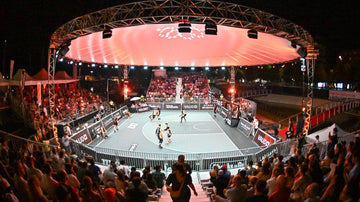Time spent on warming up and cooling down may help improve an athlete's performance level and accelerate the recovery process needed before and after training or competition. As a result, the coach may wish to encourage the athlete to regard the warm-up and cool down as an essential part of both the training session and competition itself.
Dynamic stretches - slow controlled movements through the full range of motion - are the most appropriate exercises for the warm-up. By contrast, static stretches are more appropriate for the cool down.

Warm-Up
Muscle stiffness is thought to be directly related to muscle injury, and the warm-up should be aimed at reducing muscle stiffness.
Warming up should perhaps consist of the following:
An activity to increase body temperature
Dynamic stretching exercises to reduce muscle stiffness
Dynamic stretches are more appropriate to the warm-up as they help reduce muscle stiffness. Static stretching exercises do not reduce muscle stiffness.
When compared the effects of static vs dynamic stretching on explosive performances and repeated sprint ability after a 24-hour delay. It’s found that static stretching of the lower limbs and hip muscles harmed explosive performances for up to 24 hours post-stretching. In contrast, dynamic stretching had a positive effect on explosive performances.
Remember, the objective of a warm-up is to prepare the athlete for the planned session. If you undertake event-specific drills where you conduct dynamic limb movements that replicate the planned activity movements, starting slowly and building up to the speed of movement required for the session. Consider if you have also performed an appropriate warm-up at the same time.

What are the benefits of a warm-up?
Performance may be improved, as an appropriate warm-up could result in:
Increased speed of contraction and relaxation of warmed muscles
Dynamic exercises reduce muscle stiffness
Greater economy of movement because of lowered viscous resistance within warmed muscles
Facilitated oxygen utilization by warmed muscles because haemoglobin releases oxygen more readily at higher muscle temperatures
Facilitated nerve transmission and muscle metabolism at higher temperatures; a specific warm-up can facilitate motor unit recruitment required in the subsequent all-out activity
Increased blood flow through active tissues as local vascular beds dilate, increasing metabolism and muscle temperatures
Allows the heart rate to get to a workable rate for beginning exercise
Mentally focused on the training or competition.
Cool Down
Cooling down could consist of the following:
An activity to decrease body temperature and remove waste products from the working muscles (jog/walk)
Appropriate static stretching exercises to help relax muscles, realign muscle fibres and re-establish their normal range of movement. These stretches should be held for no more than 8 seconds.

What are the benefits of a cool down?
An appropriate cool down could:
aid in the dissipation of waste products - including lactic acid
reduce the potential for DOMS
reduce the chances of dizziness or fainting caused by the pooling of venous blood at the extremities
reduce the level of adrenaline in the blood
allows the heart rate to return to its resting rate
It’s been found that based on the evidence currently available, active cool-downs (dynamic) are largely ineffective for improving most psychophysiological markers of post-exercise recovery, but may nevertheless offer some benefits compared with a passive cool-down (static).





